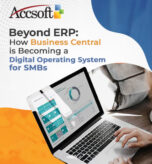
With eCommerce growth on a continuous basis, disruption-free on-line front-end shop and back-office business integration for retailers is required. Customers of Microsoft Dynamics 365 Business Central have out-of-the-box synchronisation of data between Shopify and Business Central with increased functionality through the Microsoft Shopify Connector. It eradicates man-Labor drudgery, errors, and single version of truth in customers, sales, and products.
In this blog, we’ll walk through the key steps, benefits, and considerations when implementing the Microsoft Shopify Connector.
Why Use the Microsoft Shopify Connector?
Before diving into the setup, it’s important to understand why businesses choose this connector:
Native Integration: Built by Microsoft, it connects Shopify directly to Business Central without requiring third-party middleware.
Centralized Management: Sync products, prices, customers, and orders from one system.
Scalability: Handle numerous Shopify stores from one Business Central tenant.
Automation: Auto-enter data by synchronizing orders, stock, and returns.
Key Connector Features
Product Synchronization: Synchronize products in Business Central as Shopify products.
Inventory Updates: Update warehouse-to-store inventories synchronously.
Price & Discount Management: Sync centrally in Business Central for price and discounts.
Customer Records: Automate to create or update customer records in Business Central.
Order Processing: Sync Shopify orders to Business Central for shipping and invoicing.
Multi-Store Support: Sync multiple Shopify stores to one Business Central environment.
Install the Microsoft Shopify Connector
1. Set Up Your Shopify and Business Central Accounts
Make sure Dynamics 365 Business Central is online (the connector will not work with on-premises).
Make sure your Shopify store is live and admin credentials are available.
2. Install Shopify Connector Extension in Business Central
Go to Business Central AppSource.
Search for Shopify Connector and install.
Shopify Shop Card pages will be available in Business Central when installed.
3. Setup Shopify Shop Settings
Create a new Shopify Shop Card in Business Central.
Provide your Shopify store URL and API access token.
Set up synchronization settings: products, orders, customers, and inventory refresh.
4. Map Products and Customers
Map Business Central item numbers with Shopify product SKUs.
Set up how the new Shopify customers must be handled (e.g., send to default customer or as separate customers).
5. Set up Synchronization Rules
Set up sync time (manual, schedule, or automatic).
Set up price, tax, and discount sync between systems.
Set up returns/refund handling in Business Central.
6. Test the Integration
Test sync on a few products and orders.
Make sure that the inventory sync is updating correctly between Shopify and Business Central.
Ensure customer and order history are being properly created.
7. Go Live and Monitor
Activate full sync for products and orders.
Train employees to process order, product update, and refund.
Utilize dashboards in Business Central to track performance.
Best Practices for a Successful Implementation
Start with a Pilot Store: Sync one Shopify store to pilot before scaling to lots.
Purify Your Data First: Sync SKUs, prices, and inventory in that order before syncing.
Keep an Eye Out Periodically: Use the job queue logs in Business Central to check periodically for sync failure.
Use Extensions: If your Shopify deployment is complex (e.g., custom applications, intricate discounts), then consider extending the connector through custom development.
Microsoft Shopify Connector is a merchant business facilitator that offers easy, native web-based shop and ERP integration for merchants who require it. Utilizing the connector in the right way allows businesses to:
Avoid repeated data entry
Gain real-time visibility into sales and stock
Improve customer satisfaction via seamless order fulfillment
Whether you have one Shopify store or a multitude of online stores, this connector will help you synchronize activity and grow successfully.







